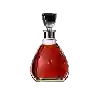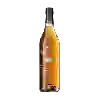
Winery Abbaye Sainte-EugenieAme de Pierre Banyuls
This wine generally goes well with beef and mature and hard cheese.
Wine flavors and olphactive analysis
Food and wine pairings with Ame de Pierre Banyuls
Pairings that work perfectly with Ame de Pierre Banyuls
Original food and wine pairings with Ame de Pierre Banyuls
The Ame de Pierre Banyuls of Winery Abbaye Sainte-Eugenie matches generally quite well with dishes of beef or mature and hard cheese such as recipes of dombrés and pig tails or saint nectaire cheese spread with local ham.
Details and technical informations about Winery Abbaye Sainte-Eugenie's Ame de Pierre Banyuls.
Discover the grape variety: Ribier noir
Most certainly originating from the department of Ardeche, more precisely from the region between Aubenas, Privas, Saint Péray, ... . It could also be found in the Galaure valley in the Drôme department as well as in Isère. It is said to be the mother of the raisin, another Ardèche grape variety. Today, Ribier is no longer planted, which means it is almost certain to disappear. It should not be confused with Alphonse Lavallée, which is synonymous with ribier, with marocain or ribier du Maroc, ... .
Last vintages of this wine
The best vintages of Ame de Pierre Banyuls from Winery Abbaye Sainte-Eugenie are 2014, 2012
Informations about the Winery Abbaye Sainte-Eugenie
The Winery Abbaye Sainte-Eugenie is one of of the world's greatest estates. It offers 11 wines for sale in the of Banyuls to come and discover on site or to buy online.
The wine region of Banyuls
Banyuls wines come from the South-eastern Part of Roussillon, in the south of France, in the lower Pyrenees, a few kilometres from the Spanish border. These naturally Sweet wines are consumed both as an aperitif and as a dessert. They come in a wide range of hues, from GoldenGreen (Banyuls Blanc) to Amber (Banyuls Ambré) to the intense garnet of the standard Banyuls Rouge. Unusually among the natural sweet wines of France, all Banyuls wines are made primarily from Grenache grapes of various colors.
The wine region of Languedoc-Roussillon
Languedoc (formerly Coteaux du Languedoc) is a key appellation used in the Languedoc-Roussillon wine region of southern France. It covers Dry table wines of all three colors (red, white and rosé) from the entire region, but leaves Sweet and Sparkling wines to other more specialized appellations. About 75% of all Languedoc wines are red, with the remaining 25% split roughly down the middle between whites and rosés. The appellation covers most of the Languedoc region and almost a third of all the vineyards in France.
The word of the wine: Extraction
All the methods (pumping over, punching down) that allow the colour and tannins to be extracted from the grape skin during maceration, before fermentation begins. It is also possible to macerate after fermentation, but gently, so as not to extract the tannins from the seeds, which are greener. Because of its solvent power, alcohol favours extraction.














